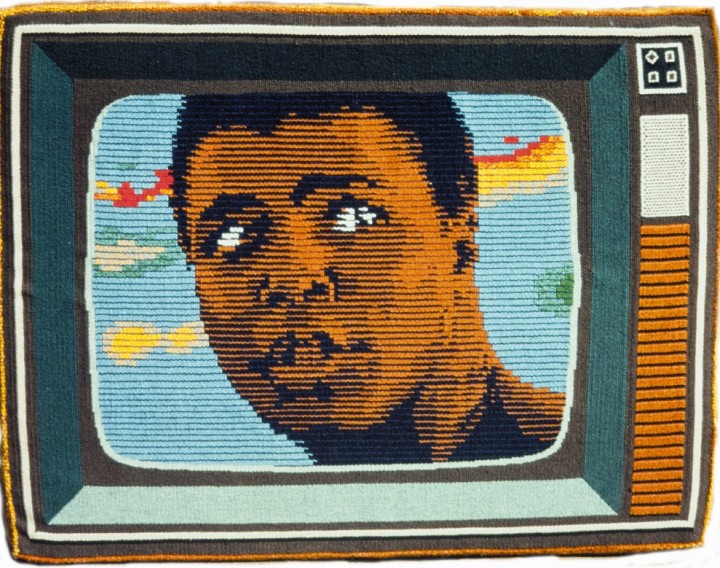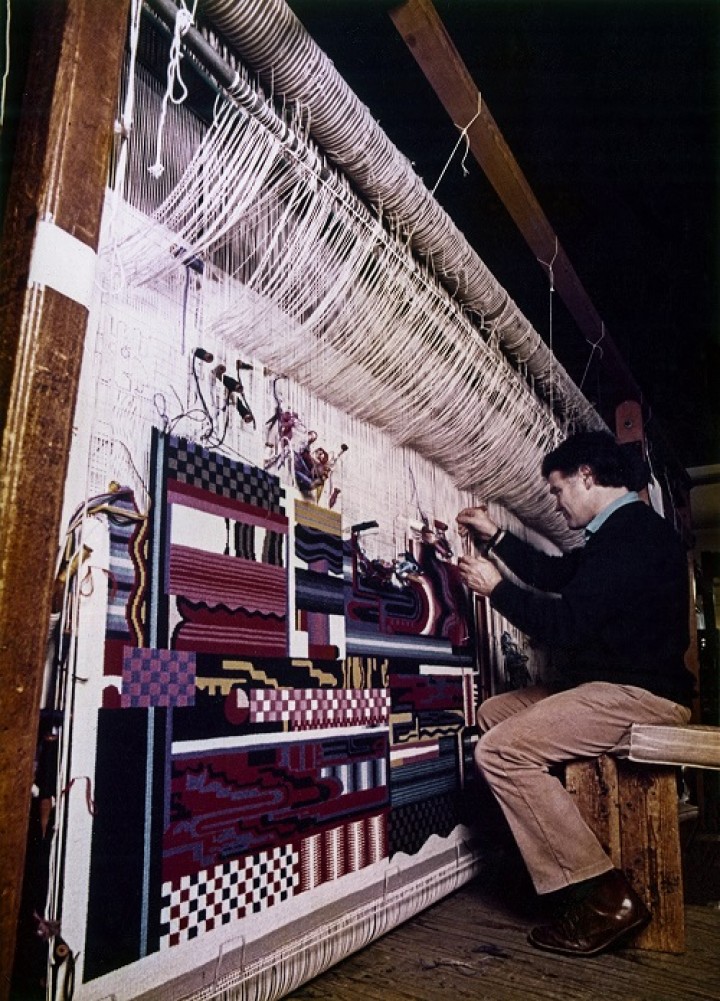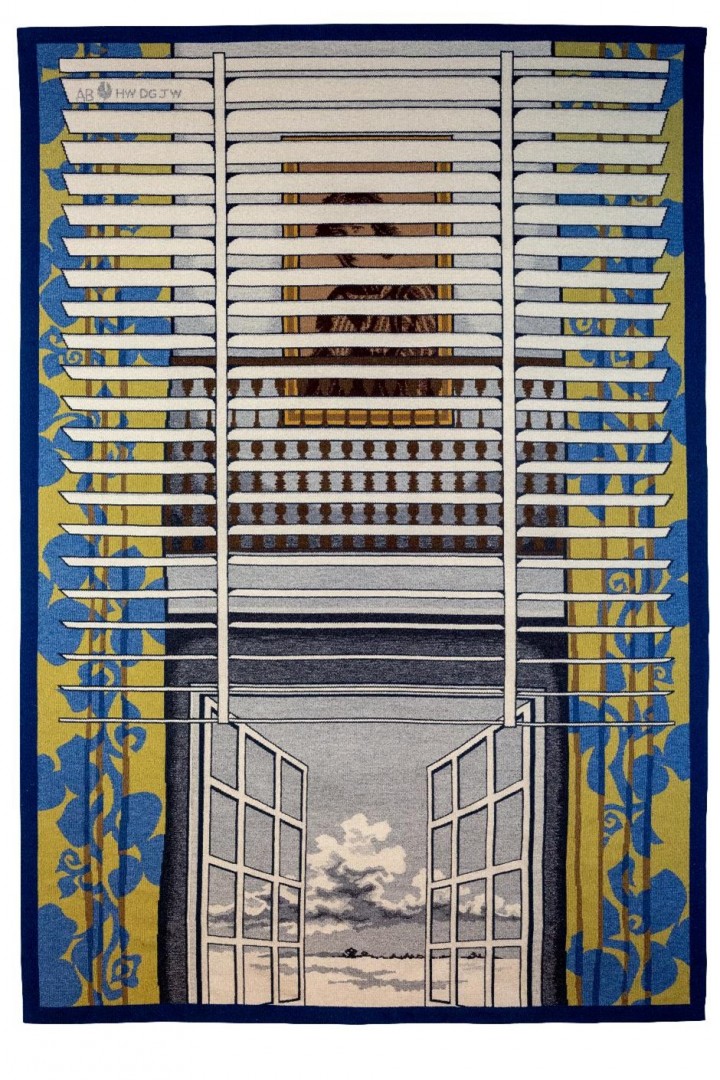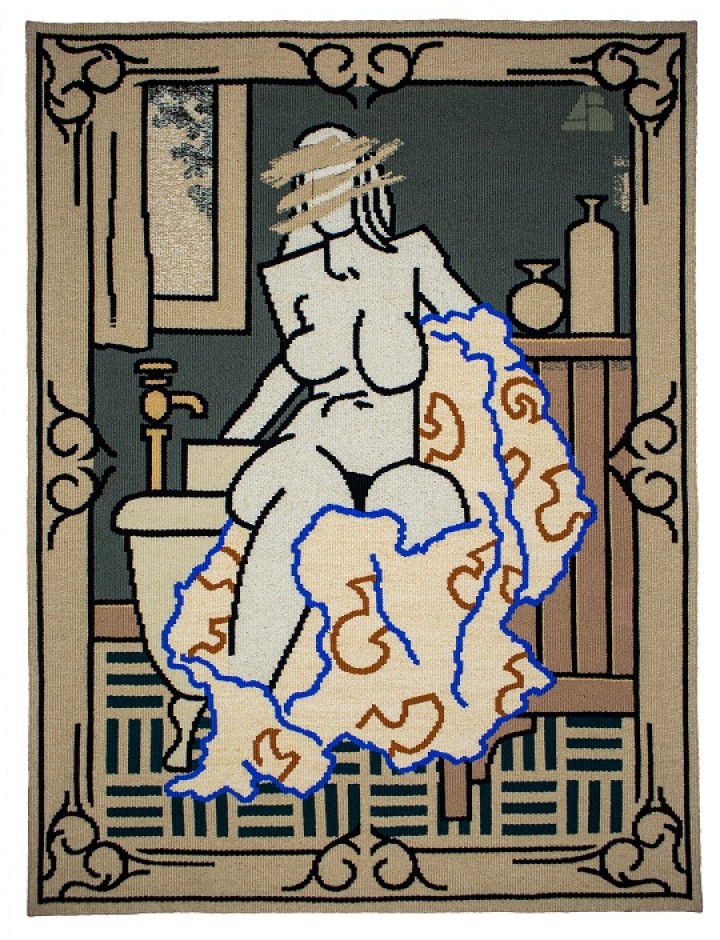Scottish Art News
Latest news
Magazine
News & Press
Publications
Warped Perspectives
By Greg Thomas, 26.04.2021

In a personal statement published by the American Tapestry Alliance, Archie Brennan evoked the former glories of his craft: “In Europe, pre-Columbian Peru and Coptic Egypt, tapestry was supreme. Five hundred years ago it was already extremely sophisticated - aesthetically, technically and in diversity of purpose.” By contrast, “the technical virtuosity of the eighteenth–twentieth century became a serious and sorry disadvantage. Tapestry was merely a servant to painters and paintings.” He concludes, however, on a positive note: today, tapestry’s “lack of defined purpose – its rarity – gives me opportunity to seek new roles, to extend its historic language.”
The field of textile art was wide open when Brennan and a few others – most notably his friend and kindred creative spirit Eduardo Paolozzi – began producing tapestries during the 1950s-60s whose formal exuberance, playfulness, and encoded cultural intelligence was unprecedented. The last major revival of textile art, during the Arts and Crafts era, had been piously reverent of the aesthetics of tapestry’s medieval heyday. This, by contrast, was textile art for the era of mass media and McLuhan— and Brennan – more exclusively dedicated to the loom than Paolozzi – was its larger-than-life figurehead.
 Archie Weaving Whitworth, Paolozzi Tapestry circa 1967. Image courtesy of Archie Brennan Estate.
Archie Weaving Whitworth, Paolozzi Tapestry circa 1967. Image courtesy of Archie Brennan Estate.
Born in Roslin, south of Edinburgh, Archie Brennan enrolled in classes at the Dovecot (then the Edinburgh Tapestry Company) as a teenager, becoming an apprentice at the studio in 1948. A spell of study in France followed, as well as a stint at Edinburgh College of Art, where he established the Department of Tapestry and Fibre Art in 1962. By 1963 Brennan was director of the Dovecot, and it was the 12 years he spent running the institution that both established his legend and revived the fortunes of tapestry-making as art. Evidently a peripatetic and ebullient character, Brennan left Scotland in 1975 for teaching stints in Australia and Papua New Guinea, before settling in Hawaii and finally New York, in 1993.
The Dovecot’s exhibition title, Tapestry Goes Pop!, emphasises Brennan’s ties to British pop art—indeed, it’s worth noting what a surprisingly effective medium tapestry proved to be for expressing that genre’s concerns with mass reproduction, artistic aura, and exchange value. Brennan was intrigued by the idea of recreating, in a time-intensive, historically-encrusted medium, the visual effects of electronic and mass media. In Was It Worth It Mr Gutenberg? (1986), a scaled-up reproduction of a tabloid column, this approach most clearly takes on the irreverent playfulness of high Pop, with its satirical contrast between labour-intensive production and throwaway content.
 At a Window VI, Archie Brennan, 1980, woven at Dovecot Studios. Courtesy of Dovecot Studios. Image Kenneth Gray Photography.
At a Window VI, Archie Brennan, 1980, woven at Dovecot Studios. Courtesy of Dovecot Studios. Image Kenneth Gray Photography.
The effect is especially striking, however, when that playful translation process also throws up multiple, reciprocal layers of abstraction. The “Mohamed Ali” series, for example, offers stylised exaggerations of the moiré patterns of analogue TV screens and the pointillism of dot-matrix news print. The interest here lies not just in the collapse of high/low art distinctions, or in a concern with celebrity culture, but in the visualisation of surprising formal affinities between the media involved. The warp and weft of textile, after all, generates a vertical/horizontal grid comparable to many means of twentieth-century reproduction, including newspaper and early computer printing, not to mention the invisible grid of the typewritten page. In this sense, the questions these works pose – like the Vasarely-esque Computer Piece (1969) – are partly about the contemporary technological resonances of a centuries-old artistic method.
More generally, Brennan’s tricks of reproduction often express an exuberant formal wanderlust which takes him away from a narrowly defined pop aesthetic, leading him to emulate a whole range of painterly and sculptural styles, as well as organic textural effects (one of the benefits of the “rarity” of his medium: its relative lack of a modern tradition). Many of his portrait pieces have a kind of post-Cubist angular brashness – even suggesting Wyndham Lewis’s tyros – while his multi-part At a Window sequence emphasises tapestry’s potential for evoking three-dimensional vanishing points—the ironic subtext, of course, being that the medium’s glory years predated the perspectival revolution of the Renaissance, so that when we think of tapestry art, we still think of a dense flatness.
 Mr Bowards Grand Daughter, Drawing Series, Archie Brennan, 2001, Kenneth Gray Photography.j
Mr Bowards Grand Daughter, Drawing Series, Archie Brennan, 2001, Kenneth Gray Photography.j
At his most conceptual, Brennan was keen on recreating in tapestry the visual appearance of textiles. At a Window IV, Lace Curtain (1976) includes a painstaking piece of what might be called meta-textile art, while a number of his works recreate the appearance of patterned clothing. His narrative sequences, meanwhile, such as Derzu Uzala (1994-97) inspired by the eponymous Kurosawa film, lithely connect the narrative textile series of the middle ages (such as the “Apocalypse Tapestry”) with the time-bound art of the movie screen. Again, modern and medieval forms are brought into unlikely creative conversation.
It will be interesting to see what role the Dovecot grants to Brennan’s collaborators – many of them women, such as the Dovecot weavers Jean Taylor and Dot Callander, who created his famous Chains II (1977) – particularly given the historic feminisation of textile arts as explored by Rozsika Parker, a key reason for its absence from narratives of modern art. That question aside, Archie Brennan: Tapestry Goes Pop! promises a bounty of riches for all viewers seeking a fuller overview of contemporary Scottish art, or simply to immerse themselves in the many threads of a gloriously dense body of work.
'Archie Brennan: Tapestry Goes Pop!' runs 26 April to 30 August 2021 at Dovecot Studios, Edinburgh.




